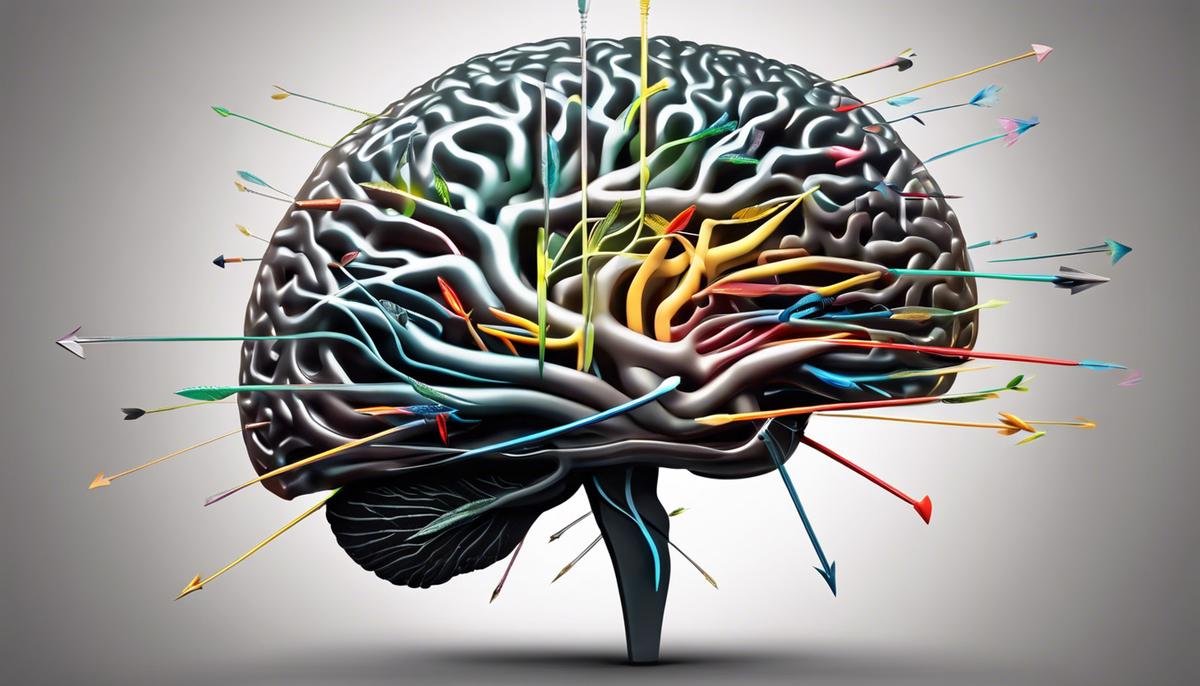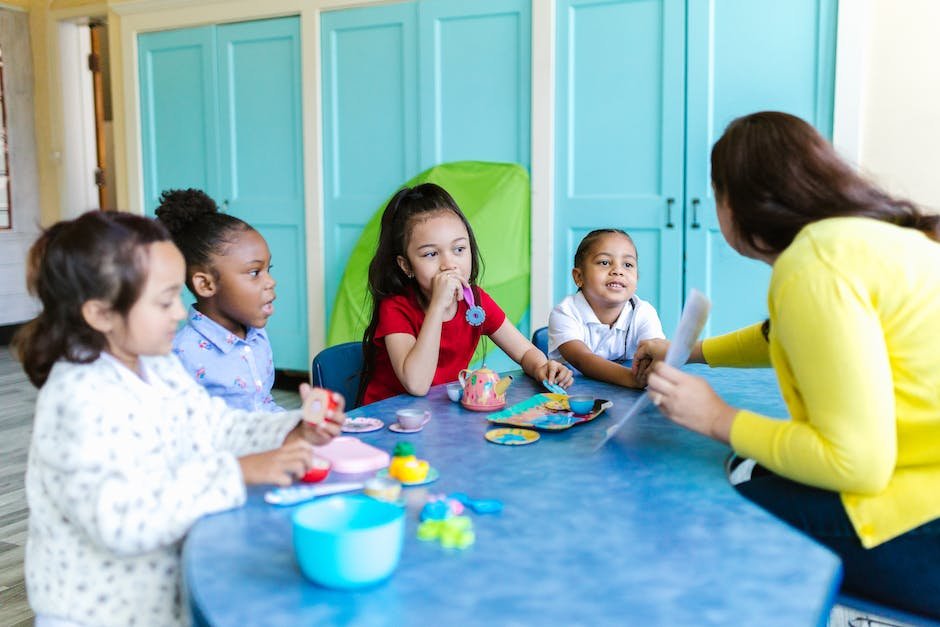
Sensory experiences form the tapestry of our everyday life, weaving together the sights, sounds, and sensations that inform our interactions with the world. For individuals with autism spectrum disorder (ASD), however, the threads of this tapestry can behave differently, with some appearing overly vivid and others dimmed or lost. The fabric of sensory processing in autism is complex and intricate, presenting unique patterns of perception that dramatically influence behavior and well-being. As we delve into the basics of sensory processing, the struggles with hypersensitivity and hyposensitivity, and the manifold strategies for support, we aim to construct a clearer understanding of this crucial aspect of autism, while highlighting the pressing need for compassionate accommodations and informed interventions.
Basics of Sensory Processing in Autism
Sensory Processing in Autism: Understanding the Unique World of Perception
As parents, we often delight in watching our children discover the world around them — tasting their first ice cream, feeling sand sift through their fingers, or gazing in wonder at a butterfly. Every giggle and squint reflects the complex process of sensory processing happening within their brains. But have you ever stopped to ponder what this process looks like for a child with autism? Let’s unpack this together.
Sensory processing is the method by which our nervous system receives messages from the senses and converts them into appropriate motor and behavioral responses. Whether it’s the aroma of freshly baked cookies or the sound of a fire truck, our bodies take in sensory information, process it, and help us know how to respond. It’s an automatic process for most, but for someone with autism, it’s like living in a world where the volume is always turned up a notch or two.
Children on the autism spectrum often experience sensory processing differently and more intensely. This difference lies in how their brains interpret the sensory data. It can mean being hypersensitive (over-responsive) to sensory input or hyposensitive (under-responsive), craving more intense sensory experiences.
Think of it this way: most of us might find a tag on a shirt slightly annoying. But for a child with hypersensitivity, that small tag can feel like a cactus, making concentration nearly impossible. On the flip end, a child with hyposensitivity might not notice stains on their clothing or might seek out strong pressure to feel grounded and secure.
This unique sensory experience in autism can affect a child’s emotional regulation, social interactions, and overall learning. Imagine trying to focus on a teacher’s voice when even the hum of the fluorescent lights sounds like a roaring waterfall to you. Or consider how challenging it might be to join a game of freeze tag if you aren’t quite sure where your body is in space.
Knowing this, it’s crucial for families, educators, and communities to recognize these differences and create supportive environments. Simple changes, like dimmed lights, noise-canceling headphones, or textured toys, can turn overwhelming spaces into havens of discovery. By understanding and respecting these sensory needs, we lay the groundwork for all children to feel secure, engaged, and ready to learn.
And so, as we continue to build a nurturing world for all of our children, embracing the differences in sensory processing is a loving stride toward inclusivity. After all, it’s the unique ways our children perceive the world that can teach us the most profound lessons about resilience, joy, and the boundless spectrum of human experience.
Let’s celebrate each individual’s sensory journey and make every effort to accommodate the diverse needs of our little ones. Because in learning how they experience the world around them, we can better understand how to make that world a welcoming place for them to grow.

Common Sensory Processing Issues in Autism
Understanding Sensory Overload and Seeking Strategies
Sensory overload is a common challenge for individuals with autism, manifesting when one (or more) of the sense organs sends information to the brain that is misinterpreted or overwhelms the processing capacity, leading to what many might describe as a sort of “circuit overload.” This experience can be triggered by a plethora of stimuli in everyday environments—anything from the buzz of fluorescent lights to the texture of a food item on the tongue.
For those on the spectrum, sensory overload isn’t just discomfort—it can be downright debilitating. Imagine the din of a crowded room amplified to the point where it is impossible to focus on anything else. Or the light touch of a shirt tag feeling like an unrelenting itch. For some, these rapidly compounding sensory inputs can lead to distress, confusion, and even physical pain.
Transition Troubles and Environmental Predictability
Understanding that those with autism often thrive on routine and predictability, any unexpected change can be a fertile ground for sensory distress. Transitions between activities—especially those that involve significant shifts in sensory inputs—can lead to anxiety and resistance. Schools and homes taking this into consideration often find smoother days by adhering to structured schedules and providing cues to prepare for imminent changes.
Tools to Tackle Sensory Challenges
To help manage these sensory processing issues, a variety of tools and strategies are often employed. Weighted blankets, for example, provide gentle, constant pressure that can be deeply comforting to someone who is feeling overwhelmed by sensory input. Noise-canceling headphones also become a refuge for those seeking a break from auditory overload. Fidget toys serve a dual purpose: They can offer a soothing repetitive motion and serve as a distraction from overstimulating environments.
The Role of Occupational Therapy
Occupational therapy is a cornerstone of managing sensory processing difficulties. Through sensory integration therapy, occupational therapists tailor strategies to each child’s specific sensory profile. They help in crafting sensory diets—activities planned throughout the day to help with attention, arousal, and adaptive responses. These may include jumping, swinging, or chewing, all designed to either up-regulate or down-regulate sensory systems for better balance.
Empowering Through Choice and Control
Empowering those with autism to have a say in how they manage their sensory environment is crucial. This could mean allowing them to select their own clothing based on comfort, choose the seating arrangement that feels most secure, or shape their own break times and activities to calm or stimulate their senses. It’s about honoring their ability to know what they need and equipping them to advocate for it.
Patience, Empathy, and Continuous Learning
Navigating the waters of sensory processing challenges is a continuous journey of learning and adaptation not just for those experiencing them but also for their caregivers, educators, and peers. Having patience, empathizing with the struggles, and seeking out ongoing education and resources can significantly bolster the support provided. It benefits the entire community to learn how varied our sensory experiences can be and to cultivate an openness to adjust as we all grow and change.
Above all, understanding and tackling sensory processing difficulties in individuals with autism is less about trying to fit into a standard mold and more about expanding the mold itself to include and embrace everyone’s unique sensory profiles. With awareness, patience, and the right strategies, it is possible to create environments where everyone has the opportunity to thrive and participate fully.

Strategies for Supporting Sensory Needs
Diving into ways families can provide meaningful support to loved ones with autism regarding their sensory processing challenges is critical. When considering this support, focusing on communication strategies and personal advocacy is essential.
Communication is vital in catering to the needs of someone with sensory sensitivities. Encourage the use of visuals, text, or simple gestures that can help express discomfort or the need for a break. This opens up a channel where even non-verbal individuals can convey their feelings. Mutual understanding eases the anxiety related to sensory overstimulation.
Family schedules and routines can be organized keeping in mind the sensory preferences of individuals with autism. Regularity provides a comforting structure, while incorporating activities that encourage sensory input, like jumping or swinging, can help in self-regulation. Moreover, reinforce the use of safe spaces within the home, places where loved ones can retreat to when they feel overwhelmed.
Education plays a transformative role for both the individual with autism and their support system. Participating in workshops and training sessions to better understand sensory processing issues can greatly improve the family’s ability to provide support. Furthermore, families could benefit from learning and practicing mindfulness and relaxation techniques together. Breathing exercises, for example, not only aid in managing stress but also serve as a bonding activity.
Nutrition is another aspect often overlooked when considering sensory processing. Sensory challenges can sometimes extend to the textures and flavors of food. Establishing a predictable yet flexible mealtime routine that accommodates these preferences promotes better eating habits and reduces mealtime stress for everyone.
Another major pillar is the careful selection of toys and resources that cater to various sensory needs, greatly benefitting those with tactile, auditory, or visual preferences. This approach aims to transform play and learning into inclusive activities that resonate with children of all sensory profiles.
Inclusivity within the community can help loved ones with autism navigate the wider world with greater ease. This may involve liaising with schools, recreational centers, and other families to advocate for accommodations that support individuals with sensory processing challenges. This collective effort enriches the community and fosters an environment of understanding and acceptance.
Ultimately, at the heart of supporting a loved one with autism is the unwavering love and belief in their abilities. It’s about creating a nurturing environment where they feel secure to express themselves and grow. Families that adapt, learn, and advocate together not only enrich the lives of their loved ones with autism but build a community spirit grounded in respect and sensitivity towards individual needs.

The Link Between Sensory Processing and Behavior
Navigating the day-to-day with an individual on the autism spectrum who also faces sensory processing challenges calls for a special touch – patience, understanding, and a sprinkle of creativity can make a world of difference. Let’s dive into some of the facets that enrich the lives of these amazing individuals and their families.
Communication strategies stand as the cornerstone for fostering an inclusive and supportive environment. Visual schedules or picture boards can be invaluable, providing a clear and consistent way to communicate the day’s structure, which can be immensely reassuring. Simplifying language and offering choices can foster autonomy while ensuring that individuals with autism feel heard and understood.
Life can be unpredictable, but establishing family schedules and routines that honor sensory preferences could be akin to anchoring a ship amidst turbulent seas. These routines bring a sense of order and predictability, reducing anxiety and the potential for sensory overloads.
Educational opportunities are not just for those in school. Family, friends, and educators can all benefit from training and understanding sensory processing issues. This shared knowledge base can ensure that support is consistent, informed, and empathetic across all environments.
Introducing mindfulness and relaxation techniques can provide dual benefits – being a calming balm for sensory sensitivities and a wonderful bonding activity. Gentle yoga or guided breathing exercises might not only soothe the nervous system but also strengthen the family unit.
Mealtime can sometimes be a battleground for sensory sensitivities. Adaptability is key; consider the texture, smell, and visual presentation of food. Encouraging participation in meal prep can help individuals with autism acclimate to different sensory experiences at their own pace, making dinnertime more harmonious.
The toys and resources we choose can either overstimulate or be a haven of comfort. Toys that cater to various sensory needs – such as tactile puzzles, musical instruments, or light projectors – can be entertaining and therapeutic, giving individuals a way to self-soothe and explore their senses safely.
Community involvement is crucial. Advocating for inclusivity isn’t just about making space for individuals with autism; it’s about recognizing their valuable contributions to society. From supportive playgrounds to sensory-friendly events, advocacy ensures that everyone is granted the dignity of participating fully in community life.
Above all, love and belief in these individuals and their endless potential are the most potent tools at our disposal. Recognizing and celebrating every milestone, no matter how small it may seem, helps to build confidence and emphasizes that each person, regardless of sensory processing challenges, can make a profound impact on the world around them.
Together, with intention and care, creating a world that’s just a bit more understanding and accommodating isn’t just a hopeful dream – it’s an achievable reality. Let’s make sure that the journey towards inclusivity and support for individuals with autism and sensory sensitivities is paved with kindness, one step at a time.

Latest Research and Developments
Seeing the World Through a Unique Lens: The Breakthroughs in Sensory Processing Therapies for Autism
Embracing neurodiversity unlocks a world of potential—not only for children with autism but for every member of the community. Imagine a world that caters to the sensory uniqueness of every individual, fostering a nurturing and accommodating atmosphere. When exploring sensory processing in individuals with autism, one dives into a complex, beautiful world that perceives our environment just a tad differently.
As families navigate sensory processing challenges, the realm of treatments and therapies is undeniably evolving. Groundbreaking advancements give a hopeful outlook for individuals with autism and their loved ones. Let’s shed light on the latest discoveries and treatment approaches that are paving the way for more sensory-inclusive societies.
One of the most promising frontiers is personalized sensory profiles. The incorporation of technology in the assessment process has revolutionized our approach. By harnessing the power of sophisticated algorithms and data analytics, specialists can now create a tailored sensory profile for each individual. This personalized map takes into account the myriad of sensory experiences a person with autism might encounter daily, guiding caregivers and educators in crafting a highly customized support plan.
Taking a leap from traditional therapies, sensory integration activities are now incorporating virtual and augmented reality experiences to safely simulate sensory challenges. Under the guidance of professionals, VR and AR can prepare individuals for real-world encounters. This immersive technology also allows therapists to adjust variables in real-time, finely tuning responses and coping strategies that individuals with autism can carry into their daily lives.
Furthermore, a treatment approach that’s gaining traction is the implementation of sensory-enriched learning environments. Imagine classrooms and play spaces designed to reduce anxiety and promote focus through elements like calming colors, natural lighting, textured materials, and quiet corners equipped with sensory modulation tools. These inclusive settings provide a haven that complements the learning and development of children with diverse sensory needs.
Another fascinating development involves the field of genetics where researchers are discovering specific genes linked to sensory processing issues. Understanding the genetic underpinnings could potentially lead to early identification and intervention plans that are tailored to the individual’s genetic makeup. This groundbreaking research holds the promise of unlocking a deeper understanding and perhaps, in time, preemptive strategies for sensory processing difficulties.
With diet and gut health being closely observed in relation to sensory processing, there’s a heightened interest in customized nutrition plans. From the textures of food to the balance of nutrients, new approaches are looking at the gut-brain axis as a critical factor in managing sensory processing challenges. It’s exciting to watch the culinary world adapt, creating sensory-friendly recipes that are nutritious, delicious, and comforting.
The power of a sensory-aware community cannot be overstressed. Local initiatives are forming support networks, sensory-safe events, and workshops that elevate awareness and build bridges of understanding. From libraries offering sensory-friendly reading hours to theaters with sensory-reduced performances, the winds of change are blowing, signaling a shift towards a kinder, more inclusive society.
As we continue to unravel the complexities of sensory processing in autism, the ever-evolving landscape of treatments and approaches heralds hope, inclusion, and empowerment. Together, we’re not just creating a world that accepts differences; we’re building one that celebrates them, ensuring that each family walks hand-in-hand with a community that understands and supports their journey.

Through the kaleidoscope of research and lived experiences, our journey into the realm of sensory processing in autism reveals a landscape ripe with challenges and opportunities. With each discovery and each innovation comes a promise—not only of a deeper scientific understanding of the sensory experiences in autism but also of more effective, personalized tools to navigate this complex world. Embracing the diversity of sensory differences, we move towards a future where every individual with autism can not only adapt but thrive, empowered by a society that honors their unique way of interacting with the environment around them.




